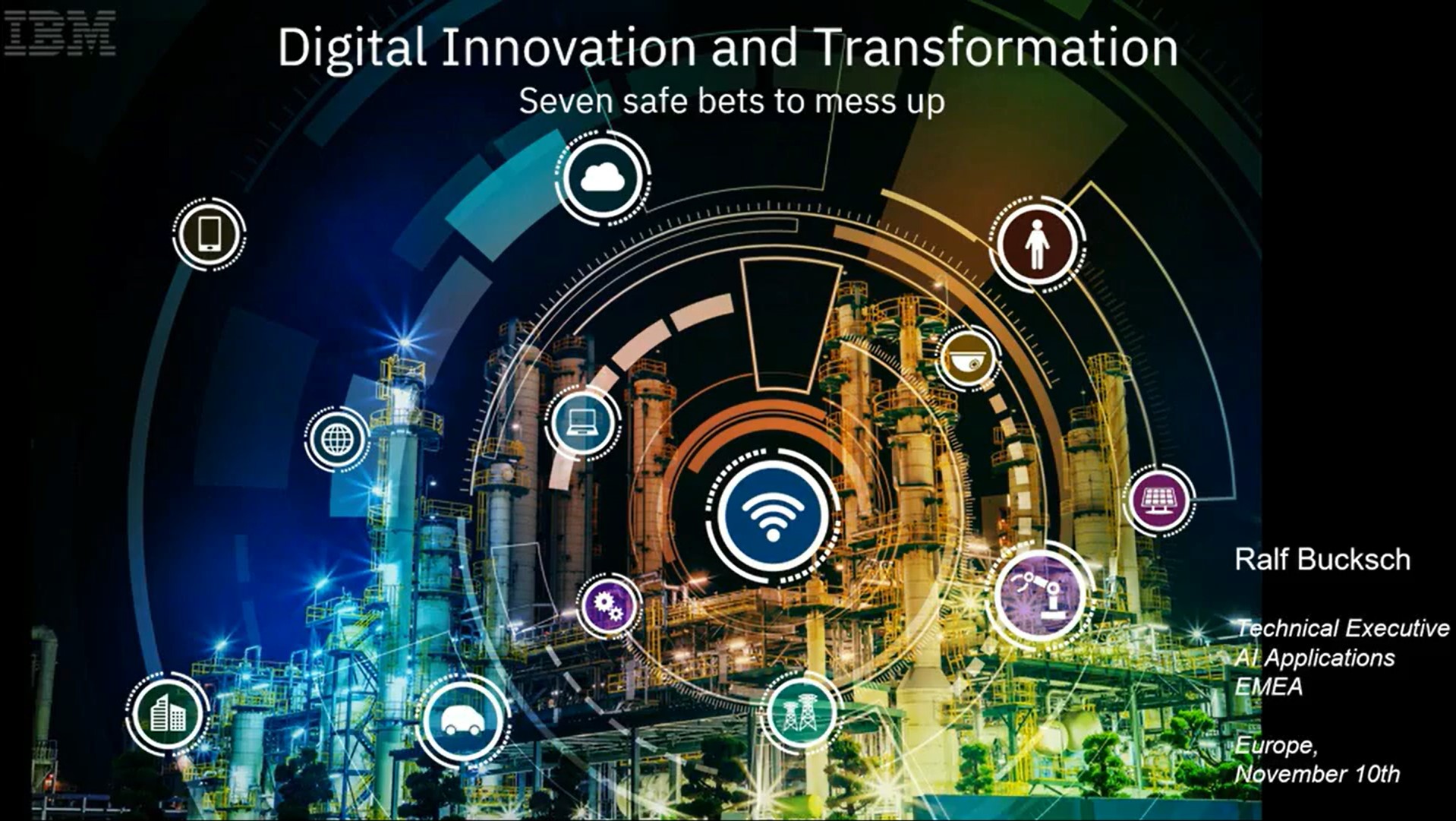What is disruptive innovation?
We explain what disruptive innovation is and provide examples of how this has changed our lives


Disruptive innovation is defined as the transformation of an existing product or service, usually those that have been so expensive or complicated that only a small user group has previously had access to them. It’s not about making products better, but transforming them to be more accessible to broader audiences.
However, in order for the innovation to be truly disruptive, it cannot just be seen as an improvement within the industry; it needs to upturn it and challenge market leaders. The smartphone is a great example of this.
Not only did the smartphone disrupt the mobile phone industry, but it also impacted the way consumers accessed the internet and challenged the laptop market. The launch of the iPhone and the introduction of apps allowed businesses to create services that hadn’t existed before, enabling them to connect with customers in completely new ways - a clear reason why more than 50% of website visits now come from mobile devices.
Sometimes the disruption isn’t about replacing technology - as smartphones did with laptops - sometimes the innovations start as very understated developments that market leaders overlook while they’re enhancing their own products for the top-end market users. This inattention allows disruptors to rethink how the technology could be available to all, and introduce low-cost options that eventually move up the market as they grow in popularity.
RELATED RESOURCE

Seven steps to successful digital innovation and transformation
What to invest in and what to avoid when pursuing digital transformation
Other times, disruptive innovation comes from an unforeseen need to do things differently, as they did in the wake of COVID-19. Video conferencing services, for example, have been around for decades but weren’t anywhere near as popular until the onset of the pandemic. Now, the majority of the population uses Zoom or Microsoft Teams.
The history of disruptive innovation
Disruptive innovation was first introduced by Clayton M Christensen in 1995. He wrote a paper on Disruptive Technologies while at Harvard Business School. It was called 'Catching the Wave' which had theories further detailed in his book 'The Innovator's Dilemma'.
This latter examined the evolution of disk drives but formed the argument that it's the business model that allows for a product to become a disruptive innovation, rather than the technology itself.
Get the ITPro daily newsletter
Sign up today and you will receive a free copy of our Future Focus 2025 report - the leading guidance on AI, cybersecurity and other IT challenges as per 700+ senior executives
The term is now considered 'modern jargon' by some thinkers and publications, although it's still widely used.
Examples of disruptive innovation in technology
The iPad - The iPhone completely disrupted the technological status quo, but beyond that, the iPad, even further eliminated the need for a laptop.
Video on demand - The concept of streaming TV programmes at any time to your TV would have been completely insane probably a decade ago.
The ability to stream content using the internet direct to the TV has completely disrupted the market. According to a recent report by the Office of National Statistics, half of adults now consume content using streaming services.
But it's also disrupted the advertising market, with an entirely new revenue stream for sponsors and advertisers, shifted the balance in rights and caused startups to overtake traditional TV networks in popularity and income.
Digital photography - Digital photography is a solid example of disruptive innovation, because not only did it introduce a technology - and whole ecosystem of accessories that grew in popularity because of it (such as memory cards, photo printers etc.), but it also completely shifted the manufacturer market, knocking Kodak, one of the previous market leaders, into oblivion.
The concept of digital photography was actually developed by Kodak engineer Steve Sasson, but it wasn't popularised by the firm because Kodak wanted to concentrate on film - its bread and butter. Unfortunately, other firms jumped onto the idea and it completely revolutionised photography, leaving film a hobbyist technology in many cases, rather than a commercial opportunity.
Ride-sharing services - this new concept of travel completely changed the way people navigate a city. It's impossible to dispute the disruption that companies like Uber have had on the travel sector.
One of the main difficulties of hailing a taxi, especially on unfamiliar ground, was simply knowing the right phone number to call and getting a good price. Uber solved all of this with its ubiquitous, map-driven app that gives travellers everything they could ever want. It may not have been popular at first, getting drivers to sign up would have been tricky, but it's showing no signs of falling now it's taken off.
Communication platforms - Where emails and face to face conversations used to be the norm, services like Slack and Microsoft Teams have transformed the way offices work.
These are cloud-based services that incorporate instant messaging, file sharing and even video conferencing software that helps productivity. The rise of Slack in the workplace has even brought up concerns about an "always-on" culture within startups, where users continue to check messages out of work hours.
Slack has often been seen as the company to end emails, which hasn't really happened, but its introduction, along with a number of other services has changed the way we work and helped with things like remote working.
Cryptocurrencies - Rather than cold hard cash or even digital payments, cryptocurrencies are, as the name suggests, currencies in the own right. While they are yet to truly transform finance a number have gained notoriety, such as Bitcoin, Ethereum and BitGold. The underlying technology for cryptocurrencies is part of the makeup of blockchain technology.
Cryptocurrencies are quite volatile, with most fluctuating dramatically in value, but it is seen as a big part of the future. Facebook cause a lot of concern for regulators when it announced it's own Libra cryptocurrency in 2019, and even the UK government is exploring plans to launch its own.

Clare is the founder of Blue Cactus Digital, a digital marketing company that helps ethical and sustainability-focused businesses grow their customer base.
Prior to becoming a marketer, Clare was a journalist, working at a range of mobile device-focused outlets including Know Your Mobile before moving into freelance life.
As a freelance writer, she drew on her expertise in mobility to write features and guides for ITPro, as well as regularly writing news stories on a wide range of topics.
-
 Bigger salaries, more burnout: Is the CISO role in crisis?
Bigger salaries, more burnout: Is the CISO role in crisis?In-depth CISOs are more stressed than ever before – but why is this and what can be done?
By Kate O'Flaherty Published
-
 Cheap cyber crime kits can be bought on the dark web for less than $25
Cheap cyber crime kits can be bought on the dark web for less than $25News Research from NordVPN shows phishing kits are now widely available on the dark web and via messaging apps like Telegram, and are often selling for less than $25.
By Emma Woollacott Published